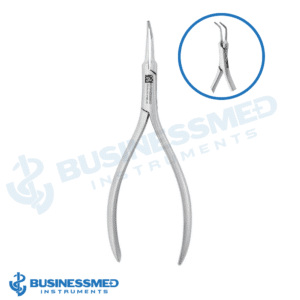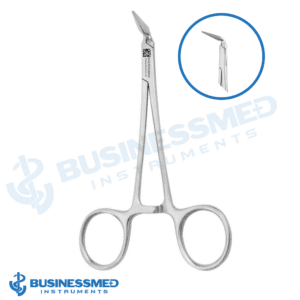Showing all 2 results
Endodontic Forceps – File & Fragment Handling for Root Canal Precision
Endodontic forceps are specialized instruments used in root canal therapy to hold files, pins, gutta-percha points, or retrieve broken instrument fragments. Their fine, angled jaws and locking mechanisms allow clinicians to work efficiently in confined canal spaces while maintaining optimal visibility and control.
Types of Endodontic Forceps
File & Pin Holding Forceps
Designed to securely grasp and transfer hand files, pins, or gutta-percha points into the root canal.
Available in straight and angled designs, ensuring access to both anterior and posterior teeth.
Product Example:
Broken-Instrument Retrieval Forceps
Feature fine jaws, often diamond-coated, to grip and remove broken files, root fragments, or foreign objects during retreatments.
Provide precise control to avoid damaging surrounding structures.
Product Example:
Locking vs. Non-Locking Variants
Locking forceps use a ratchet mechanism to hold files firmly, reducing operator fatigue.
Non-locking designs allow quick release and repositioning during procedures.
Key Features to Consider
Material: Surgical-grade stainless steel, autoclavable and corrosion-resistant.
Jaw Precision: Narrow tips (~1.4 mm) for delicate canal work.
Length: Typically 130–155 mm (5–6 inches) for optimal reach.
Ergonomics: Lightweight, comfortable handles for prolonged use.
Certifications: CE/ISO compliance ensures safety and reliability.
Clinical Applications
File and Gutta-Percha Handling: Safe placement and removal while preserving canal integrity.
Broken Instrument Retrieval: Essential in retreatments for removing fractured files or pins.
Auxiliary Use: Handling rubber dam clamps or small fragments during endodontic procedures.
Comparison Table
| Forceps Variant | Jaw Style/Mechanism | Primary Use |
|---|---|---|
| File/Pin Holding Forceps | Straight/angled jaws, optional lock | Placement & retrieval of files, pins, and GP points |
| Broken-Instrument Retrieval | Fine diamond-coated locking jaws | Gripping and removing fractured canal fragments |
| Standard Locking Forceps | Ratchet locking handles | Sustained grip during long procedures |
FAQs
Q1. What’s the difference between file-holding and retrieval forceps?
File-holding forceps are for routine handling of files or pins, while retrieval types are specialized for removing broken fragments.
Q2. Are angled forceps better than straight ones?
Yes, angled versions improve access and visibility in posterior canals.
Q3. Why choose locking over non-locking forceps?
Locking mechanisms reduce slippage and minimize hand fatigue during delicate operations.
Q4. Can endodontic forceps be used in other dental procedures?
They can assist with handling small fragments or clamps but are primarily designed for endodontics.
Related Endodontic Categories
Conclusion & Call-to-Action
Choosing the right endodontic forceps improves precision, safety, and efficiency during root canal treatments, especially in complex retrieval cases.
👉 Contact Us for bulk orders, customized solutions, or further inquiries.


